
How_It_Works_-_Book_of_101_Amazing_Facts_You_Ne
.pdf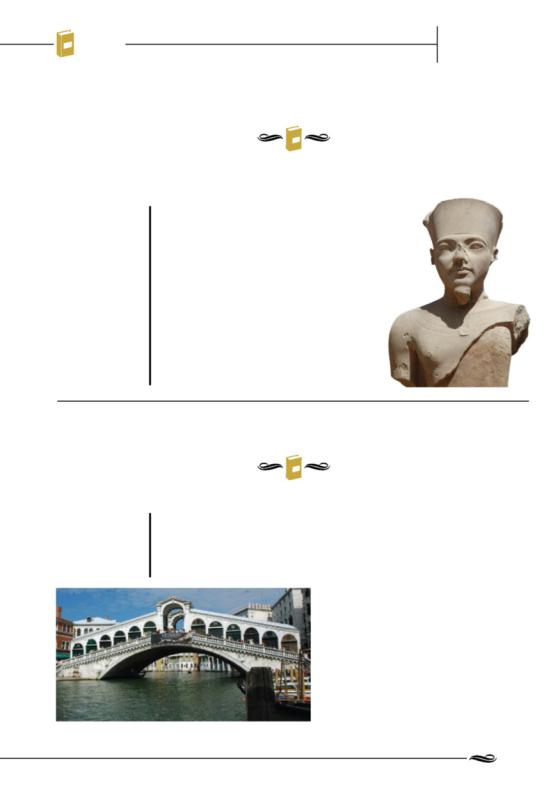
WorldMagsHistory .netPharaohs/
The Rialto
Bridge
Which pharaoh ruled the longest?
Who ruled over Ancient Egypt for the longest time?
Right
Many pharaohs had longer reigns than today’s monarchs
According to later king lists, Pepi II ruled for 94 years around 2200 BCE. However, contemporary documents
only go up to the seventh decade of his reign, and it is not certain that he really ruled for that long. The longest fully documented reign is the 67 years of Rameses II, who came to the throne
in 1279 BCE and built more temples than any other pharaoh. The next place is a tie between Thutmose III (1479 BCE) and Psamtik I (664 BCE), both of whom ruled for 54 years.
When was the Rialto Bridge built?
It’s an instantly recognisable landmark, but when was it built?
The Rialto Bridge is one of only four bridges that span the Grand Canal in Venice, Italy. It was commissioned in the late-16th century to replace the previous wooden structure,
which was prone to collapse. Blueprints were submitted by the most eminent architects of Renaissance Italy, including Michelangelo, but the commission ended up going to the relatively unknown Antonio da Ponte in 1588, whose revolutionary design featuring a single broad arch was completed in 1591. Today, the Rialto Bridge is one of the most visited tourist sites in the city.
книга выложенаWorldMagsгруппой vk.com/englishlibrary.net |
131 |
|
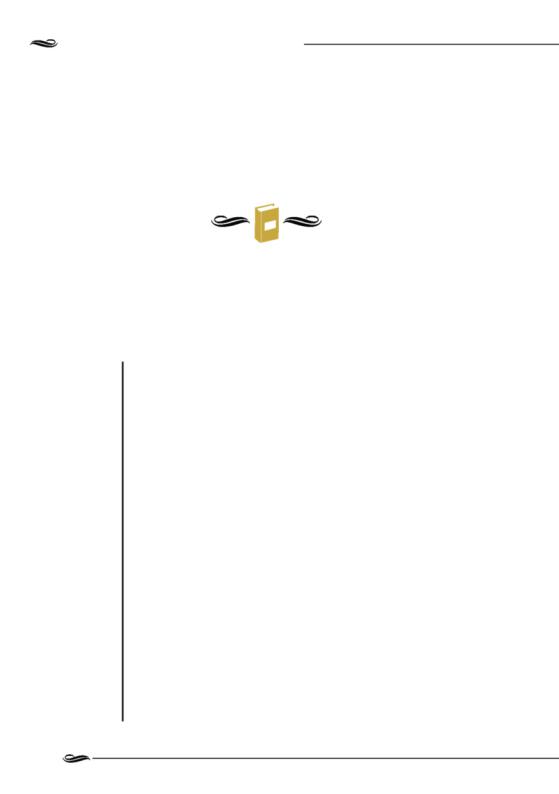
WorldMags101 Amazing Facts You Need To Know .net
Why does the Tower of Pisa lean?
Find out how the tower was made, how it went wrong, and how it continues to stay standing
The local architects and city officials designed the complex at Piazza dei Miracoli (the Square of Miracles) as a dedication to art, and as such it is thought the principles of science and
engineering were not fully understood.
The tower was built in three stages over a period stretching nearly two centuries. The first part of the tower was built during a time of town prosperity and as such heavy white marble was used for the base and tower, with limestone used for the interior and exterior design features.
Disaster occurred just five years after work began, as the workers finalised the interior of the third floor. The tower was sinking because the weight of the marble building was too much for the extremely insufficient three-metre foundations which had been set in weak and unstable soil that contained a malleable mixture of clay, sand and rubble. The construction was halted for nearly a century to allow the soil to settle. In 1272 work recommenced as engineers began to build the tower’s middle section.
To compensate for the continuing problem of its lean, the workers built one side of the wall taller than the other. Subsequently the tower began to lean in the opposite direction and caused it to curve. War caused a break in construction and the seventh floor was not completed until 1319 and the eighth level, featuring the belfry, was finally added in 1372.
132 |
книга выложенаWorldMagsгруппой vk.com/englishlibrary.net |
|
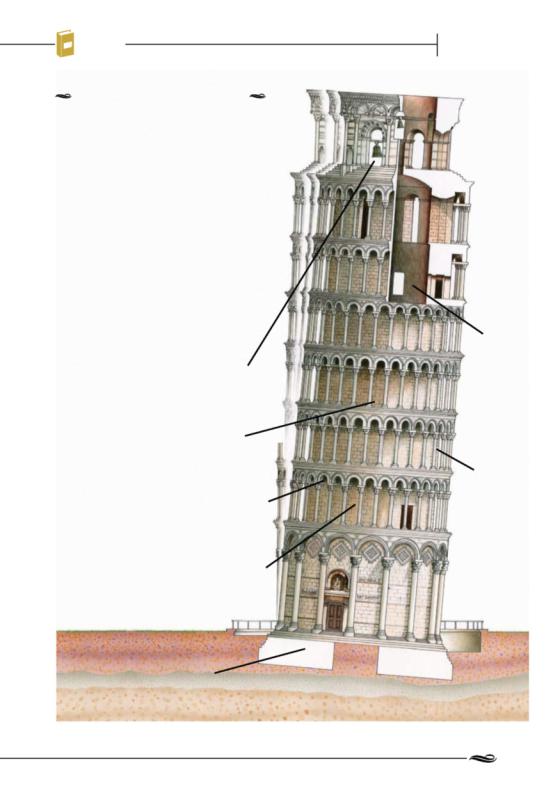
WorldMagsHistory .netWhy does
the Tower of Pisa l an?
How does it not fall over?
In 1964 a desperate Italian Government requested aid to stop the tower from toppling. One of the first methods to be tested was to add 800 tons of lead counterweights to the raised end of the base, but this only added to its subsidence. With the problem worsening it was decided to close the tower in 1990 and remove the bells to relieve some of the weight. Cables were cinched around the third level and grounded several hundred metres away to anchor
the weight. Work began on removing some 38 cubic tons of soil from under the raised end of the base, which straightened the tower by 18 inches – regaining an angle last recorded in 1838. Ten years of corrective stabilisation followed and the tower reopened to the public in 2001. In 2008 another 70 tons of earth was excavated and for the first time the structure has officially stopped moving.
Bell tower
The Bell chamber was added in 1372. It features seven bells – one for each note of the musical scale. The largest of which was installed in 1655.
Third floor
Upon reaching this level, engineers noticed the tower was starting to sink. The heavy white marble had become too heavy for the foundations set in soil.
Spiral staircase
The inner wall was fashioned from worked limestone and comprises a 296-step spiral staircase.
Shape
The tower has a cylindrical body encircled with arches and columns. The central body is a hollow shell which features an external wall of white and grey limestone.
First floor interior
Lining the inside the first floor is a series of arches in a typical Romanesque blind arcade style, intersected with columns displaying classical Corinthian capitals.
|
Foundations |
|
Made of white marble, the |
|
construction began in 1173 during a |
Images |
time of prosperity in Pisa thanks to |
the success of its military. |
|
©DK |
|
Curvature
In 1272 architects fashioned a corrective axial inclination where the walls on one side of the tower were taller than the other – giving the building its concave appearance.
книга выложенаWorldMagsгруппой vk.com/englishlibrary.net |
133 |
|
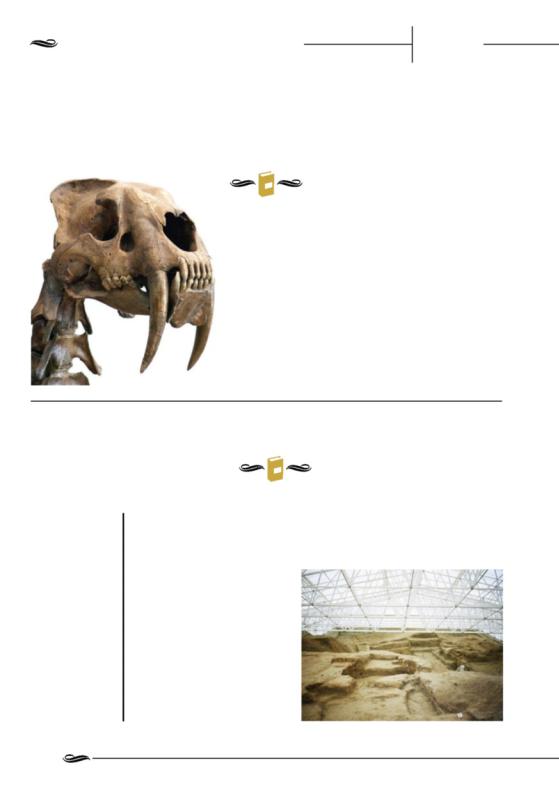
Sabre-tooth d
WorldMags101 Amazing Facts You Need To Know .nettigers/
Archeology
How long were sabre-toothed tigers’ teeth?
©Walace63
A look at this extinct animal’s defining features
Sabre-toothed tigers were actually sabre-toothed cats, or smilodons, which lived mainly in the Americas and became extinct about 10,000
years ago. Their teeth were between 18-28cm (7-11in) long. It’s believed smilodons used their teeth on subdued prey to cut off the blood supply and strangle them. Despite the larger teeth, they had a weaker bite than modern-day big cats but could open their jaws 120 degrees compared to lions whose limit is 60.
What’s the biggest excavation site?
The archeological site that’s larger than Luxembourg
Right
The ruins of the temple complex of Angkor Wat in Cambodia covers up to 1,160 square miles
The prehistoric site of Çatalhöyük in Turkey covers about 13 hectares (32 acres), while the Palace of Knossos, Crete, covered an area of about 13,000 square metres (140,000 square feet).
Pompeii covers an area of 60 hectares (145 acres) and has been described as ‘the most complete urban excavation ever undertaken’. This is tiny in comparison to the ruins of the temple complex of Angkor Wat in Cambodia, which cover up to 3,000 square kilometres (1,160 square miles)!
©Ziggurat
134 |
книга выложенаWorldMagsгруппой vk.com/englishlibrary.net |
|
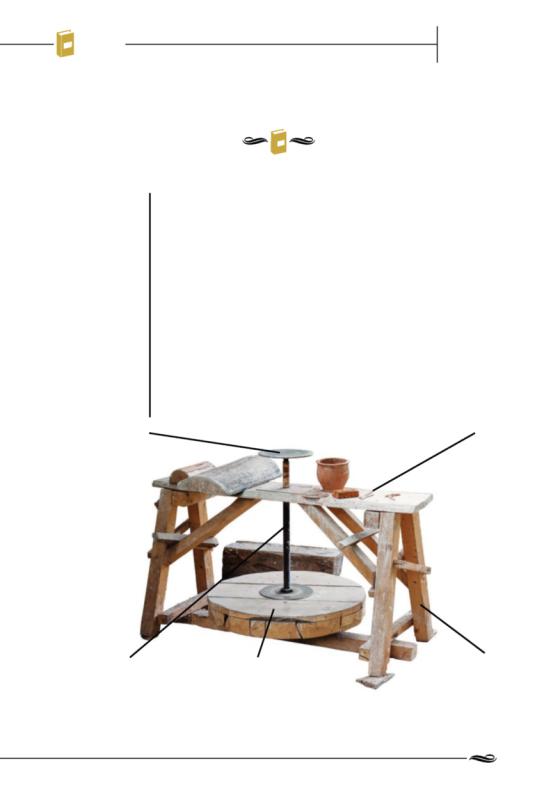
WorldMagsHistory .netHow was
pott ry made?
How was pottery made?
A look at the potter’s wheel – a revolutionary device in ceramics
Modelling wheel
The potter shapes the clay material on this plate, which rotates at high speed while they model the object.
The potter’s wheel enabled us to easily create round ceramic wares such as pots and gourds. The machine worked by supplying the potter with a rotating circular platform upon
which, via hand moulding, clay could be shaped as desired. The rotation was provided by a large kick wheel, which once set in motion
– the potter literally kicked it, hence the name – supplied energy to a smaller modelling wheel, which sat above on a metal shaft. As the kick wheel was much bigger than the modelling wheel, it acted as a flywheel, storing rotational energy that could be used to power the modelling plate, which due to its smaller circumference, span at a greater speed.
Thanks to its ease of use, the potter’s wheel remained the method of choice for making pottery for many millennia, eventually evolving to be driven by a motor.
Tools
While pots are moulded with the hands, a number of small tools help the potter make incisions and add decoration.
Wheel shaft |
Kick wheel |
Frame |
Both wheels are |
The wooden frame |
|
connected through |
The potter kicks this wheel to start it |
provides support for |
the centre of the |
rotating. It acts as a flywheel, storing |
both the wheels and a |
wooden frame by a |
energy and forcing the connected |
surface for the potter |
metal shaft. |
modelling plate to spin at high speed. |
to work on. |
книга выложенаWorldMagsгруппой vk.com/englishlibrary.net |
135 |
|

What
WorldMags101 Amazing Facts You Need To Know .netcaused the
Ice Ages?
What caused the Ice Ages?
Why the Earth’s temperature plummeted
It’s likely that a combination of changes to atmospheric composition, the Earth’s orbit and ocean currents
are responsible for these periods of low temperatures. Many experts link the onset of ice ages to falling levels of greenhouse gases. Variations in
Earth’s orbit around the Sun also play a role, controlling how much solar
energy the planet receives and affecting temperatures. Finally, the shifting of tectonic plates has a knock-on effect on ocean and wind currents, which have an important influence on Earth’s climate.
136 |
книга выложенаWorldMagsгруппой vk.com/englishlibrary.net |
|

WorldMagsHistory .netHow did wa er
mills work?
How did water mills work?
How did these ancient systems harness the power of water to perform a variety of tasks?
Water mills were – and in rare circumstances still are – facilities in which moving water was used as the driving force to power a milling apparatus. The key component in
a water mill was a waterwheel, although in later times turbines were also employed, which converted the kinetic and potential energy of water into rotational mechanical energy to drive various machines.
Most commonly the mill would grind grain to produce flour. Historically there have been different types of water mill, each
largely determined by the type of wheel they used. The kind of wheel chosen was dictated by the local geography and the source of water, with rivers on flat plains requiring an undershot waterwheel, while those dropping from elevated positions allowing for more efficient designs, like overshot wheels. Today, water mills are used far less due to the availability of more efficient energy-production systems; however, some mills still operate for demonstrative purposes.
1. Input flow
Water from a river or stream is diverted to flow over a paddle-wheel through a chute.
2. Water drops
The water falls from height into the wheel’s slatted wells, causing them to fill up and push the wheel downwards.
©SPL
3. Wheel rotation
The downwards motion of the wells causes the wheel to turn, converting the kinetic energy of the water into rotational energy.
4. Cogs
The rotational energy generated by the wheel is transferred to the mill via a series of cogs and gears.
6. Output flow
As the filled wells reach ground level, their contents are
deposited back into the waterway, flowing out of the system.
5. Mill
The energy is carried by the gears to machinery inside, which
– in this example – is grinding wheat to produce flour.
книга выложенаWorldMagsгруппой vk.com/englishlibrary.net |
137 |
|
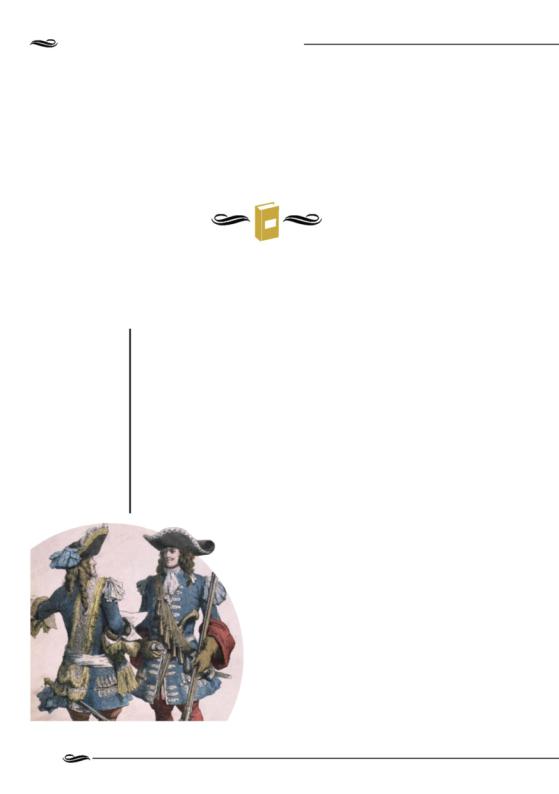
WorldMags101 Amazing Facts You Need To Know .net
Who were the musketeers?
They fought in battles and protected esteemed rulers all the way from France to India
Below
A Prussian engraving of a French musketeer (right) from the reign of Louis XIV (1643-1715)
©Alamy
Musketeers were an early form of soldier who were armed with muskets. They acted as a bridge unit between traditional infantry and dragoons, a type of light cavalry armed
with long-ranged weapons. This granted them a level of versatility and flexibility most prized on the battlefield, with musketeer units typically reserved for the protection of nobility or royalty.
While musketeers as a unit are older, they didn’t emerge in Europe until the 16th century, with the concept only really taking off on a large scale in the early-17th century. While this particular era was dominated by the French musketeers of the Maison du Roi (the Royal Household) – upon which the fictional musketeers of Dumas’s The Three Musketeers are based – Spain, Britain, Russia, Sweden, Poland
and even India each developed their own musketeer units in this period and used them on the battlefield.
Musketeers as a common military unit were largely phased out by the middle of the 19th century,
with developments in firearms rendering the musket obsolete. With the introduction of the rifle – which could shoot both farther and much
faster than the musket – the rifleman unit could emerge, negating the need for the greater speed of the mounted musketeer. This, combined with the decline of many dynasties throughout Europe – like the Ancien Régime of France – saw all musketeer units permanently disbanded.
138 |
WorldMags.net |
|
книга выложена группой vk.com/englishlibrary |
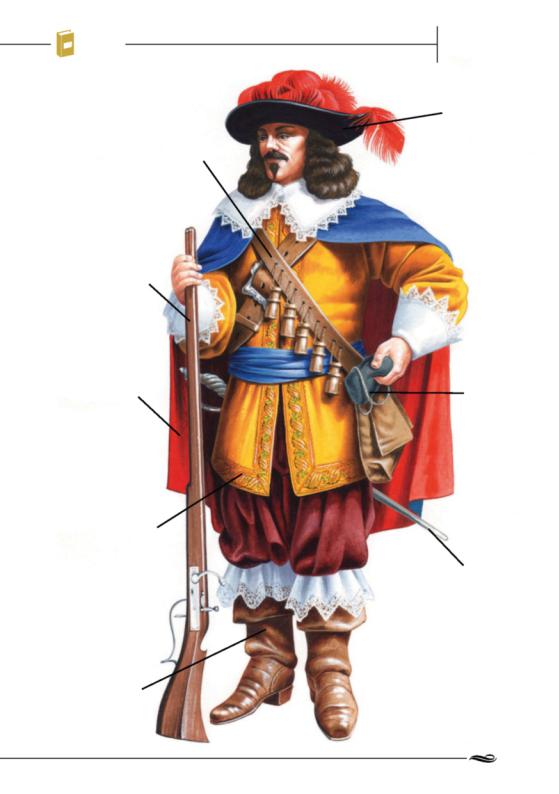
WorldMagsHistory .netWho w re he
musk t ers?
Bandolier |
Hat |
Bandoliers (a pocketed belt) and |
Musketeers started |
ammunition pouches/bags were a |
off in the West |
common accessory for musketeers, |
wearing simply |
so they were always well supplied on |
ornate hats, but by |
the battlefield. These belts were |
the early-19th |
strapped around the waist or chest. |
century these |
|
evolved into metal |
|
helmets. They did |
Musket |
remain decorative |
though, often with |
|
The musketeer’s primary |
large feathered |
weapon, the musket was |
plumes attached. |
deadly albeit cumbersome |
|
to use. Its slow reload rate |
|
restricted use to four shots |
|
per minute at best. |
|
Cape
A feature associated more with earlier iterations of musketeers, the cape offered some protection from the elements while travelling.
Tunic
Considerably more elaborate than standard infantry, musketeer tunics and – in later periods – cuirasses, favoured manoeuvrability over armoured protection.
Boots
Boots were an important part ofthe musketeer’s uniform, both communicating their prestigious position and providing good support on the ground and on horseback (some had
spurs attached).
©IanJackson
Holdall
As musketeers were on the road during much of their military service, each carried their own holdall to store food and personal belongings.
Sword
As musketeers were trained to fight both on horseback like dragoons and on foot like infantry, they were also equipped with a sword for hand-to-hand engagements.
книга выложенаWorldMagsгруппой vk.com/englishlibrary.net |
139 |
|

WorldMags.netWho wrote
101 Amazing Facts You Need To Know the Magna
Carta?
Who wrote the Magna Carta?
Learn about this famous medieval document
Below (left)
King John signed the Magna Carta, although didn’t intend to honour it
Below (right)
Salisbury Cathedral houses one of the four original copies
The Magna Carta, or Great Charter, is an English medieval document drawn up in 1215 by King John’s barons in feudal times. The barons were tired of having a king who could
punish according to whim and the Magna Carta was a document that sought to curtail this power and give every freeman (non-serf) certain rights.
King John signed the document, although his intent was simply to bring the barons over to his side, as civil war was brewing and
Prince Louis of France was threatening to invade. He had no intention of honouring the document. But after King John’s death in October 1216, the Magna Carta was copied and frequently used to show the sovereign was bound by law. Indeed, it has proved to be one of the most important civil rights movements in British history.
A 1297 copy of the Magna Carta has been preserved by the National Archives Conservation Lab by putting it in a case filled with the noble gas argon to prevent damage from oxidation. The case itself was hollowed out of a 15-centimetre (six-inch) block of aluminium in order to reduce creases through which the gas might leak.
©Getty
140 |
книга выложенаWorldMagsгруппой vk.com/englishlibrary.net |
|
